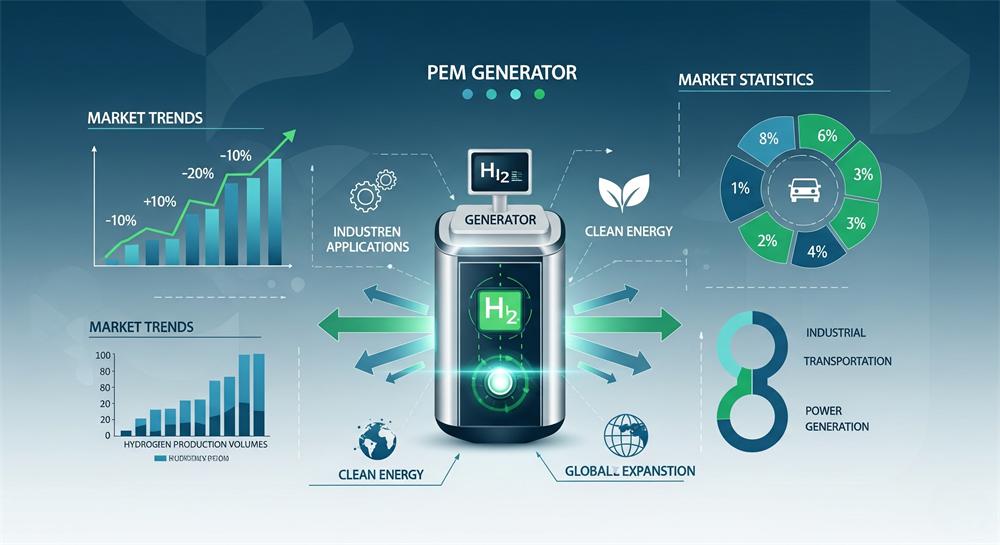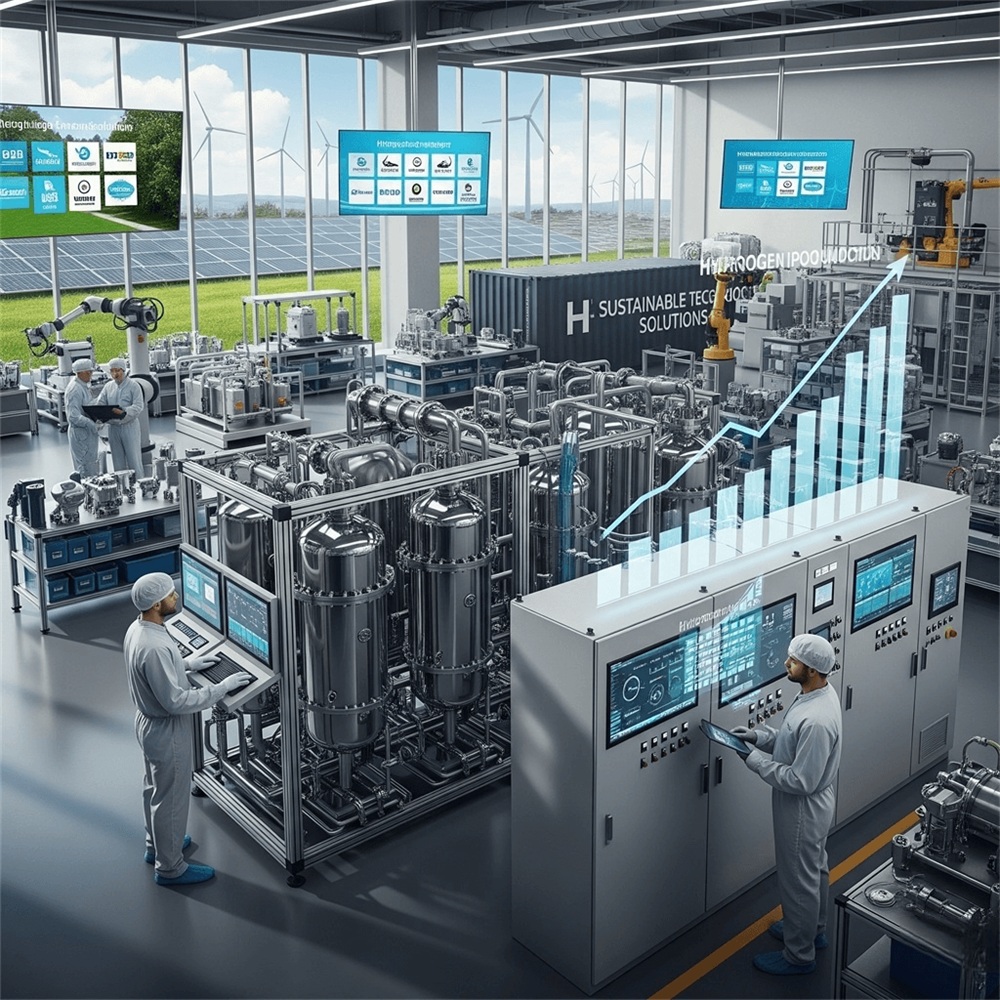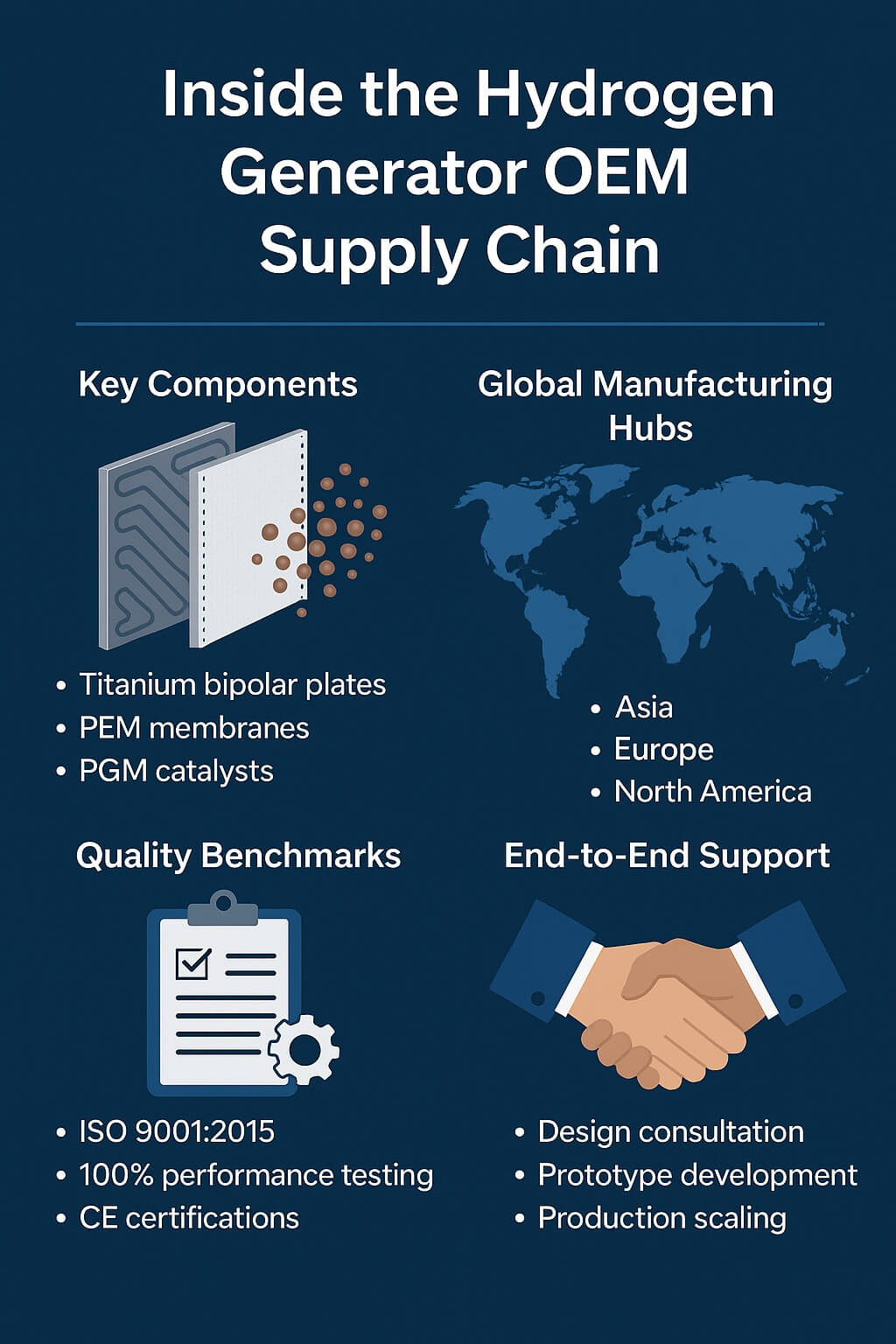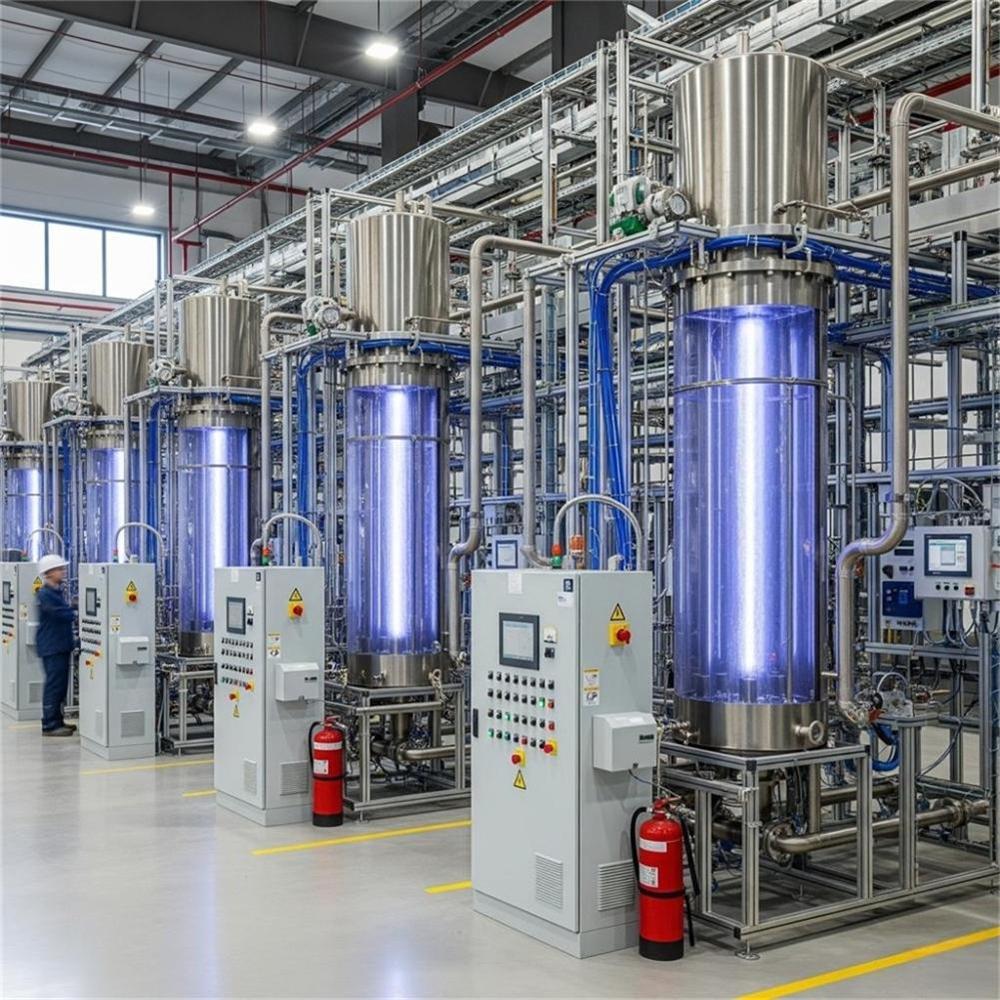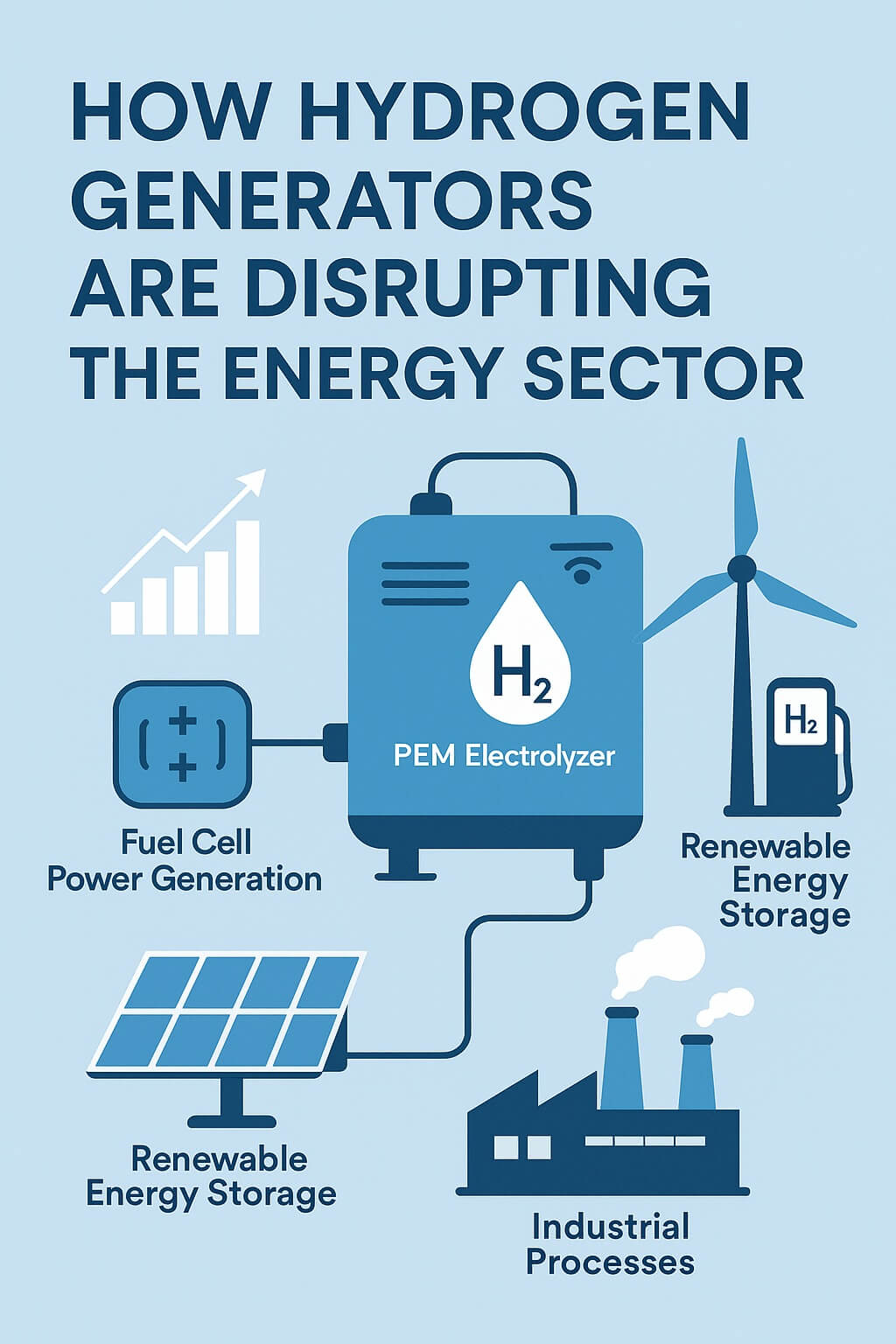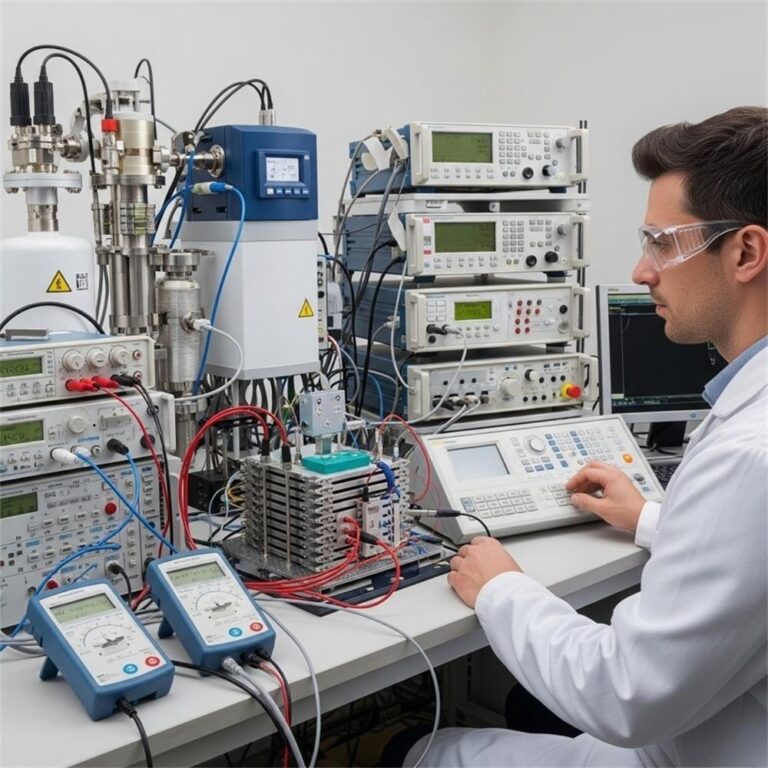Introduction: The Rise of Residential Hydrogen
As the world races toward net-zero emissions, hydrogen is stepping into the spotlight—not just for industrial use but increasingly for homes. Home hydrogen generators represent a paradigm shift in sustainable energy, offering clean power generation, storage, and independence.
Enterprises within the renewable energy sector are now eyeing this growing market segment, and for good reason. With energy costs rising and grid instability increasing, hydrogen solutions are more attractive than ever to homeowners—and the businesses that serve them.
Among the technologies making this possible, PEM (Proton Exchange Membrane) and SPE (Solid Polymer Electrolyte) electrolysis stand out. This guide is tailored for B2B decision-makers, offering a deep dive into residential hydrogen generation, including applications, technology comparisons, safety protocols, cost breakdowns, and market outlooks.
Let’s explore how hydrogen generators for home use are unlocking new opportunities across the B2B renewable energy landscape.
Understanding Residential Hydrogen Applications
Hydrogen’s versatility means it can serve multiple energy needs within a household. For businesses, this diversity opens the door to several service and product verticals.
Powering Homes with Hydrogen
Hydrogen can be converted into electricity via fuel cells, powering household appliances, lighting, and critical systems. This is particularly valuable in remote or off-grid locations where conventional electricity supply is inconsistent or nonexistent.
Residential Heating Solutions
Burning hydrogen or using it in combined heat and power (CHP) systems allows for emission-free residential heating. B2B vendors offering heating solutions or hydrogen-compatible infrastructure can tap into this transition.
Hydrogen for Vehicle Refueling
Though still in early stages, home-based refueling stations could one day allow homeowners with fuel-cell vehicles to bypass public hydrogen stations. For businesses involved in hydrogen compression, storage, or fuel-cell tech, this represents a burgeoning market.
Energy Storage and Backup Power
Hydrogen serves as an excellent medium for long-term energy storage. It can be produced when solar or wind energy is in surplus and used when generation drops. Companies providing storage tanks, sensors, and hydrogen-safe infrastructure have an essential role to play.
PEM (Proton Exchange Membrane) Technology Explained
PEM electrolysis is a leading method for small-scale hydrogen production—particularly for residential settings where space and responsiveness are key concerns.
How PEM Electrolysis Works
PEM electrolysis splits water molecules using a solid polymer membrane as the electrolyte. Hydrogen is produced at the cathode while oxygen is released at the anode.
Key Advantages of PEM
- High efficiency (~60-80%)
- Compact size for indoor installations
- Quick start-up—ideal for intermittent solar or wind power
- High purity hydrogen output
Disadvantages of PEM
- Costly catalysts, typically platinum or iridium
- Requires purified water to prevent membrane fouling
- Maintenance-intensive compared to SPE systems
B2B Relevance
From membrane suppliers to maintenance service providers, the PEM ecosystem requires a robust support structure. B2B buyers should assess supply chain reliability, technical support, and after-sales servicing when investing in or distributing PEM systems.
SPE (Solid Polymer Electrolyte) Technology Explained
SPE electrolysis, often confused with PEM, is a slightly different approach that also uses a solid electrolyte but is designed to be more tolerant of real-world conditions.
How SPE Electrolysis Works
Similar to PEM, SPE uses a solid polymer membrane. However, SPE units are often constructed for rugged operation and impurity tolerance, making them suitable for homes without advanced water purification.
Key Advantages of SPE
- Simpler system design
- Greater durability in varied environmental conditions
- Tolerates less pure water—reducing pre-treatment costs
Disadvantages of SPE
- Slightly lower efficiency than PEM
- Bulky systems—may require more installation space
- Less commercial availability than PEM
B2B Relevance
Companies focused on cost-sensitive markets or rural deployments may find SPE units ideal. Equipment suppliers, installers, and safety system vendors all have an opportunity to expand offerings for these robust, resilient systems.
PEM vs. SPE: A Head-to-Head Comparison for B2B Buyers
| Criteria | PEM Electrolysis | SPE Electrolysis |
|---|---|---|
| Efficiency | 60–80% | 50–70% |
| Water Purity Needed | High (Deionized/RO) | Moderate (Tap water with filtration) |
| Start-up Time | Fast | Moderate |
| Maintenance | Higher | Lower |
| Durability | Moderate (sensitive to impurities) | High (robust in harsh environments) |
| Footprint | Compact | Larger |
| Cost | Higher initial cost | Potentially lower capex and opex |
| B2B Suitability | High-tech, premium markets | Rural, cost-sensitive, durable markets |
Setting Up a Home Hydrogen Generator: A Step-by-Step Guide
- Water Source and Purification
- Use RO or deionized water for PEM.
- Basic filtration may suffice for SPE.
- Electrolyzer Unit Selection
- Choose based on hydrogen demand, power availability, and water conditions.
- Hydrogen Storage
- High-pressure tanks (350–700 bar) or metal hydride storage units.
- Fuel Cell Integration
- Install a compatible hydrogen fuel cell system for electricity conversion.
- Safety Systems
- Include hydrogen sensors, automatic shut-off valves, and proper ventilation.
- Installation Services
- Professional setup ensures regulatory compliance and optimal performance.
B2B players—installers, engineers, safety experts—can form partnerships to offer turnkey hydrogen solutions to homeowners.
Cost Analysis: Is Home Hydrogen Generation Economical?
Initial Investment
For B2B buyers, understanding the capital expenditure (CapEx) is key when evaluating hydrogen generator offerings:
- Electrolyzer unit (PEM or SPE): $5,000 – $15,000
- Hydrogen storage: $3,000 – $10,000 depending on size and pressure rating
- Fuel cell system: $6,000 – $12,000
- Installation & safety systems: $2,000 – $5,000
Enterprises offering bundled packages or leasing models can help offset upfront costs for end-users, creating scalable revenue streams.
Operational Costs
- Electricity for electrolysis: 4–7 kWh per m³ of hydrogen
- Water consumption: ~9 liters per kg of hydrogen
- Maintenance: ~$300–$1,000 annually
Businesses involved in supplying replacement membranes, catalysts, or filters can generate consistent after-sales revenue.
Government Incentives
Many regions offer rebates, tax credits, or low-interest green loans for residential hydrogen systems. For instance:
- The U.S. Inflation Reduction Act offers credits for green hydrogen.
- The EU’s Green Deal includes subsidies for hydrogen infrastructure.
- Japan’s ENE-FARM project supports residential hydrogen fuel cells.
B2B vendors can enhance sales pitches by integrating these benefits into their ROI projections.
Long-Term Savings and ROI
Though upfront costs are high, long-term savings on energy bills (especially in off-grid or high-tariff areas) can yield a payback period of 5–10 years. Offering predictive ROI calculators as part of the sales toolkit can give your enterprise a competitive edge.
Safety Considerations: Handling Hydrogen Safely at Home
Understanding Hydrogen’s Properties
Hydrogen is:
- Colorless and odorless
- Highly flammable
- Lighter than air, disperses rapidly if vented
Safety risks are manageable, but mitigation is critical.
Ventilation and Leak Detection
- Install leak sensors near storage and generation areas
- Ensure proper airflow through vents or fans in enclosed spaces
- Use explosion-proof enclosures for electrical components
Emergency Protocols
- Automatic shut-off valves connected to sensors
- Fire suppression systems in high-risk areas
- User training and emergency drills for homeowners and installers
Compliance and Standards
B2B vendors must ensure products adhere to:
- ISO 16110 for hydrogen generators
- NFPA 2 hydrogen technologies code
- IEC 62282 fuel cell safety guidelines
Companies providing compliance consulting, safety audits, or training programs can capture niche opportunities in this space.
The Future of Home Hydrogen Generation
Technological Advancements
Ongoing R&D is focusing on:
- Cheaper, non-platinum catalysts
- Membrane durability improvements
- Smart integration with IoT and energy management systems
Policy and Incentives
As nations pledge to decarbonize, expect broader hydrogen subsidies, mandates, and public-private partnerships.
- Hydrogen blending in residential gas grids is under trial in the UK.
- California and South Korea support home hydrogen tech with dedicated grants.
Emerging B2B Opportunities
- Localized microgrid solutions
- Hydrogen-powered backup systems for smart homes
- Collaborations with solar and wind providers for hybrid energy packages
Driving Industrial Synergies
For enterprise players, hydrogen can serve as a gateway to vertical integration—from production to storage to distribution, all within the residential sector.
Frequently Asked Questions (FAQs)
1. What is the difference between PEM and SPE hydrogen generators?
PEM (Proton Exchange Membrane) systems offer higher efficiency and compact design but need purified water and costly catalysts. SPE (Solid Polymer Electrolyte) systems are more rugged and tolerate impure water but may have lower efficiency and larger footprints.
2. Is it safe to produce and store hydrogen at home?
Yes, with proper installation, leak detection, ventilation, and adherence to safety codes, home hydrogen systems are safe. Hydrogen disperses quickly and systems are built with fail-safes.
3. How much hydrogen can a home generator produce daily?
Small residential units typically produce 0.5–2 kilograms of hydrogen per day, enough to meet household energy needs or refuel a hydrogen vehicle.
4. What kind of maintenance do these systems require?
Regular maintenance includes filter replacements, membrane checks, and system diagnostics—usually every 6–12 months. Many providers offer maintenance packages or remote monitoring services.
5. Can home hydrogen systems work with solar or wind power?
Absolutely. In fact, coupling with solar/wind enhances system sustainability by converting excess electricity into storable hydrogen, ideal for energy independence and grid backup.
6. What industries stand to benefit from home hydrogen generator adoption?
Energy storage firms, HVAC providers, renewable equipment installers, safety tech companies, and even homebuilders integrating smart energy solutions can benefit from the growing hydrogen market.
Conclusion: Embracing Home Hydrogen for a Sustainable Future
Hydrogen is no longer a distant dream—it’s a present-day opportunity. For B2B decision-makers in the renewable energy space, home hydrogen generators represent a high-growth, high-impact market.
From PEM to SPE, from system integration to safety compliance, there’s a broad spectrum of business opportunities to explore. By understanding the technology, aligning with regulatory standards, and offering value-driven solutions, your enterprise can help shape the future of sustainable living—while capturing new revenue streams in a decarbonized economy.

